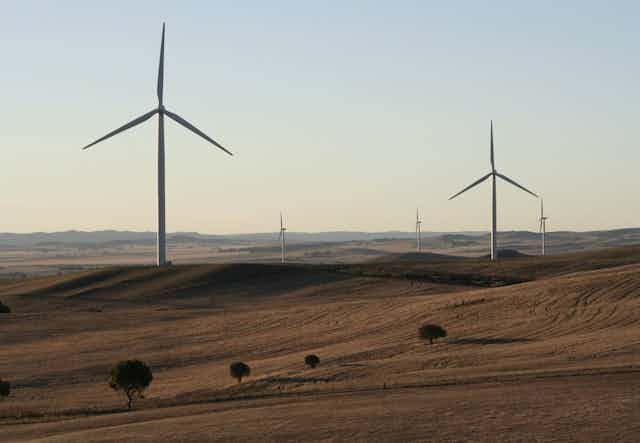Malcolm Turnbull has set a high bar for his government’s national energy policy. But in his speech to the National Press Club on Wednesday, the prime minister provided little by way of the clear policy direction that is so desperately needed if the bar is to be cleared.
Turnbull devoted almost a quarter of the speech to Australia’s energy challenge: delivering secure and affordable power while meeting our emission reduction targets.
His political opponents and environmentalists will reject as too low Australia’s current target of 26-28% below 2005 levels by 2030. Yet few can credibly reject his framing of the challenge.
Security concerns
Given the events of the last half of 2016, including the state-wide blackout in South Australia in September, it was appropriate that Turnbull began with the issue of security of supply.
Subsidised wind power in South Australia provided more than 40% of supply, and the market responded by driving down prices. The closure of existing coal plants and the mothballing of some gas plants followed. The state’s consumers were left exposed to power outages and high prices due to a high dependence on transmission from Victoria and a few gas generators with considerable market power.
Yet it was the Renewable Energy Target, a policy supported by both Coalition and Labor governments since 2002, that provided the subsidy. This policy had scant regard for the security consequences of high levels of intermittent supply.
Turnbull was justified in his criticism of uncoordinated state-based renewable energy targets and their potential for adverse price and security consequences. Yet he chose to ignore the argument that a key driver for the states’ action is the failure of the federal government to deliver a credible, scalable climate change policy.
Storage solution
The critical need to manage high levels of intermittent supply was a major theme of Turnbull’s speech and he identified several technology approaches that could address this need.
Storing energy in a form that is available as electricity to match supply and demand has enormous attraction. However, large scale, flexible energy storage as heat, electricity in batteries or as pumped water in dams, is very expensive today.
Applying the resources of the Australian Renewable Energy Agency and the Clean Energy Finance Corporation to develop projects, as energy minister Josh Frydenberg announced following the speech, makes a lot of sense. This could drive down the costs in Australia.
Gas supply is a major issue on the Australian east coast, and one where federal/state differences have led to a real mess.
Inconsistencies between states on project development regulations and few levers of influence in the hands of Canberra. Turnbull suggested he is willing to explore incentives in an effort to break the impasse. Let’s hope the states take up his offer.
Coal in the mix?
Over the past few weeks, Frydenberg and resources minister Matthew Canavan have raised the question of a future for coal power in our energy mix. It was therefore not surprising that Turnbull proposed that new coal power technologies could offer both reliability and low emissions. However, on this front, there are big challenges.
The current cost of these technologies is considerably higher than that of existing plants. And the scale of the required investment, combined with climate change policy uncertainty, makes it highly unlikely that such plants could be financed without government backing. There were no hints from Turnbull as to how this might be provided.
In summary, the prime minister‘s vision of an integrated energy and climate change policy is, at a high level, coherent and convincing. His suggestion that the next incarnation of national energy policy should be technology agnostic should be applauded.
Yet, there remain three areas for criticism. First, he sought to draw “battlelines” on energy policy. In a policy area where long-term investments are so critical, it is hugely disappointing that Turnbull appears unwilling to seek bipartisan support.
Second, while arguing that his government’s policies could deliver emissions reduction more cheaply than Labor and without threatening security, he chose to let pass an opportunity to explain to the Australian people the economic cost of the energy transition he has embraced.
Finally, he has left for others the hard task of framing the energy policy framework that will clear his high bar. Let us hope his colleagues, specifically minister Frydenberg, are up to the task.

